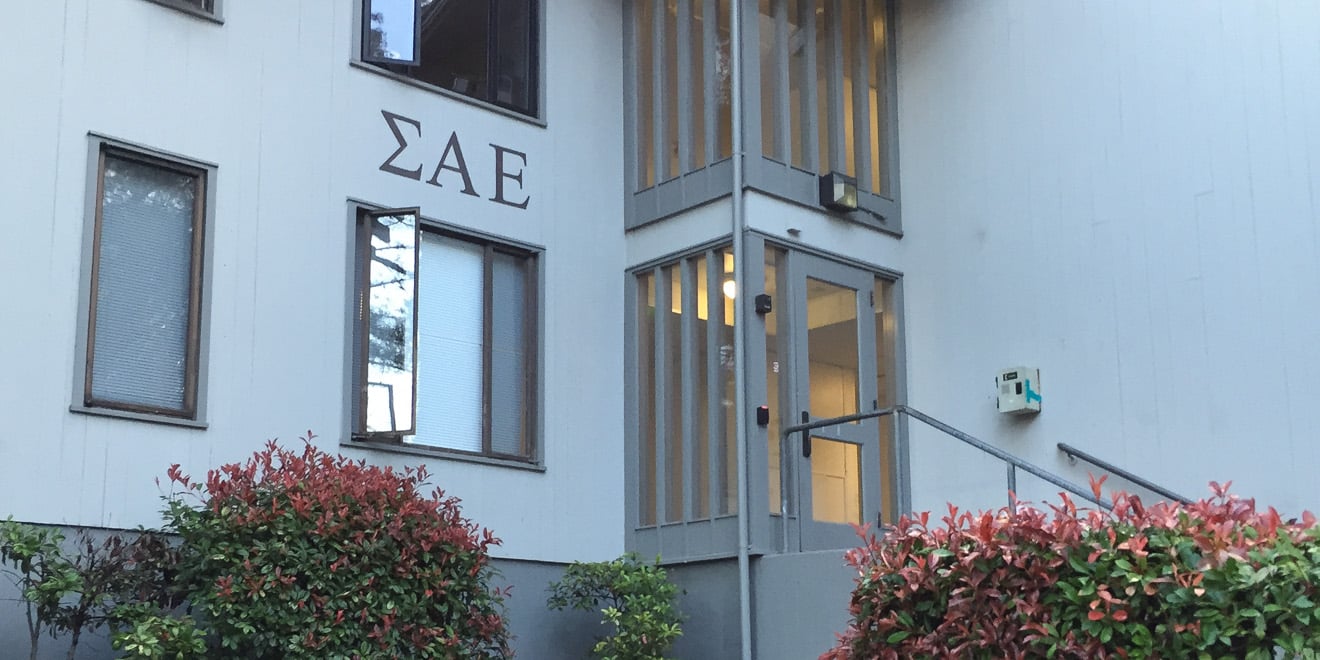1047 Campus Drive, formerly the residence of Stanford’s chapter of the Sigma Alpha Epsilon (SAE) fraternity, will be home to chapters of three Greek organizations on campus beginning in fall of 2017. The offer to claim the house was accepted by Stanford’s chapters of the Sigma Phi Epsilon (SigEp) fraternity, Sigma Psi Zeta (SYZ) sorority and Sigma Theta Psi (STP) sorority.
According to Amanda Rodriguez, the assistant dean of Residential Education (ResEd) on the Row and director of Fraternity & Sorority Life, and Nate Boswell, associate dean of ResEd, there had been an informal understanding in place that 1047 would return to housing Greek organizations. This was tied to the understanding within ResEd, Boswell said, that about 10 row houses are allocated to fraternities and sororities, at least for the past two decades.
The process of transitioning 1047 back into a Greek house of some sort officially began in October of 2016, when the opportunity was revealed to the presidents of all Greek organization chapters present on campus.
The Standards of Excellence (SOE) program is an annual evaluation process for all Greek organizations that categorizes them based on current standing with the University. Each organization makes a presentation in front of a panel of three staff members. This fall, organizations were informed that these presentations would serve as a benchmark for eligibility; all chapters that achieved a score of “Exceeds Expectations” would be eligible to apply for 1047.
Ten organizations were ultimately deemed as eligible, and out of those 10, six chose to apply. To apply, each group made an additional presentation during the second week of January in front of a panel of three who would then make a recommendation to Dean of ResEd Deborah Golder.
SigEp, SYZ and STP were the final organizations selected and given the chance to share the residence, and all three accepted after some deliberation.
In terms of making a final decision, group values and foreseen intentions of house use were big factors.
“All three of these organizations used language, if not exactly the same, then similar, in conceptualizing the space as a campus resource, as a center for campus,” Boswell said. “How they manifest that remains to be seen, but that is one way they really distinguished themselves.” He hopes these groups can both learn from and teach one another as well as the rest of campus.
1047 will be the first residence acting as a shared Greek house at Stanford, not to mention a shared Greek house representing multiple genders and cultures. A shared residence of this kind would be unprecedented at most institutions with Greek life, Boswell and Rodriguez noted. The two emphasized the experimental nature of the two-year commitment, mentioning that innovation and change were driving the whole decision process.
“There are things that have happened in the last five, 10 years with Row house changes that are reactionary,” Boswell responded. “They were responses to things that were not so great. This is an opportunity to intentionally do something that is forward-thinking, that is experimental, that is for the students but different than what’s been done in the past.”
With the experimental nature of the house comes many unknowns. ResEd has considered questions of how the students might work together in the space and what sort of imbalances might exist.
In order to level out the makeup of the space, staffing structure will be split equally among all three organizations. The two sororities, which are smaller in size, are going to have a majority of the bed spaces, the mathematics of which are still being worked out. This agreement comes as a part of a conversation ResEd has been engaging in with the students involved and not something decreed by figures of authority.
The change to 1047, Rodriguez noted, looks toward the positive.
“We haven’t had an intentional change in a row house for a while,” Rodriguez said. “Regardless, bringing in new energy and something different looks toward positive change.”
“We want the Row to be representative of the entire student body, and historically it hasn’t been,” Boswell said. “This is a really interesting evolution.”
Contact Susannah Meyer at smeyer7 ‘at’ stanford.edu.
